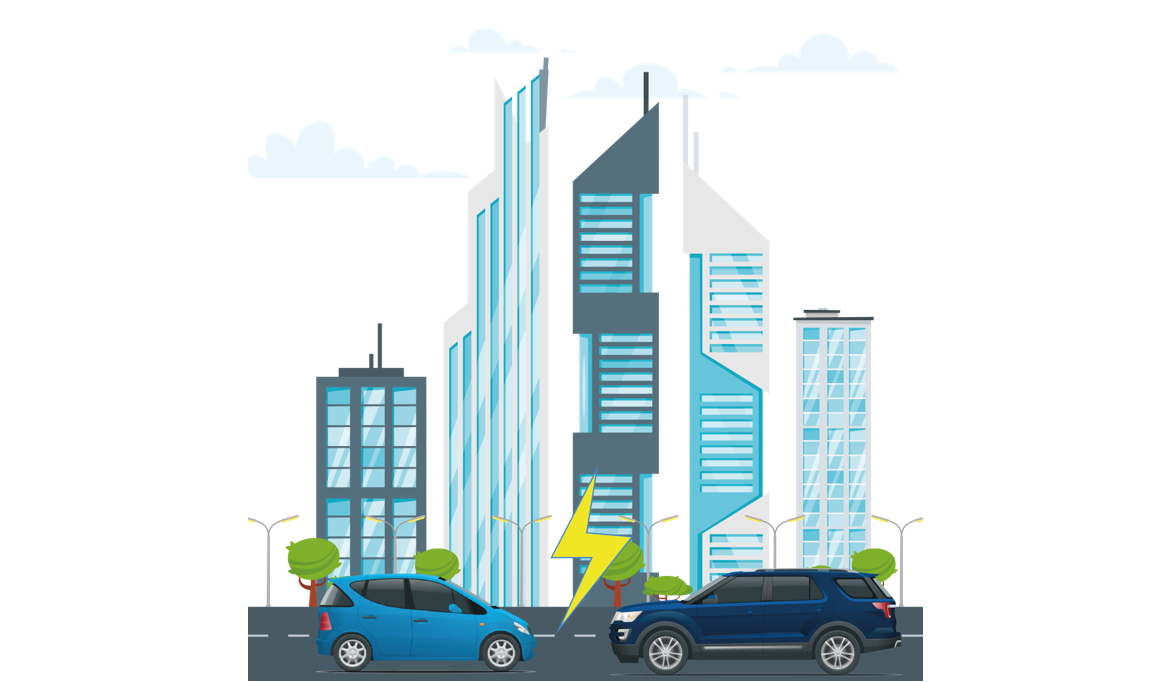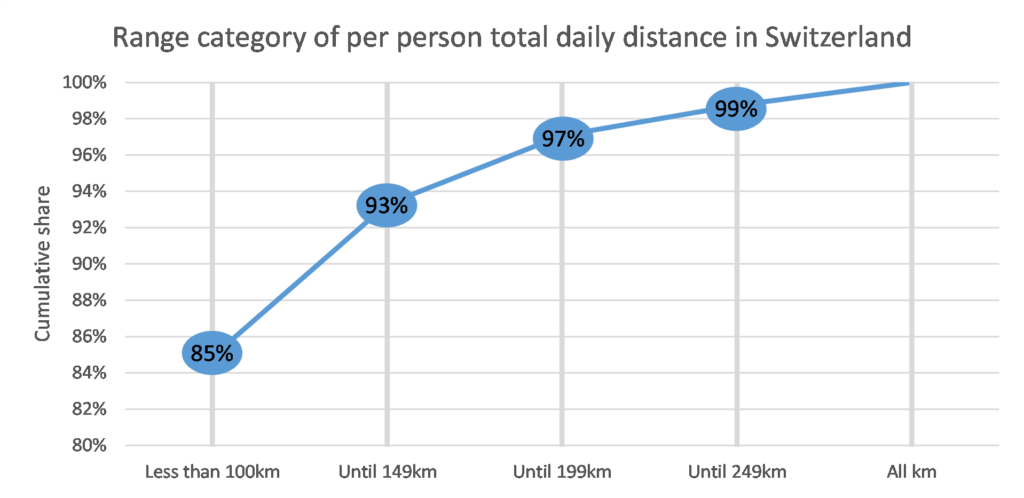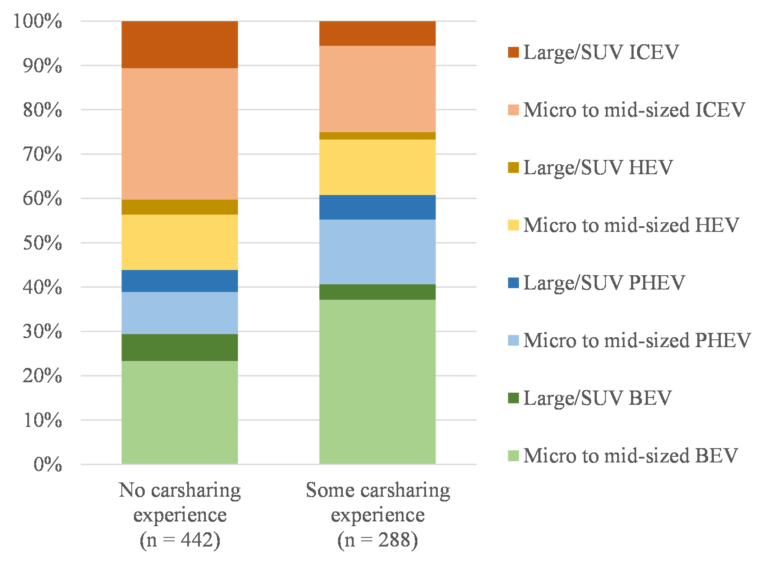
Battling the boom of large cars: How to increase the adoption of small battery electric vehicles
On 15.12.2021 by Raphael HörlerRaphael Hoerler is working at the Institute of Sustainable Development at the Zurich University of Applied Sciences (ZHAW) and is a PhD student at the Climate Policy Group at ETH Zurich. He likes to question current mobility lifestyles and is curious about sustainable and future-oriented mobility solutions and transitions, both from a technical and behavioural standpoint.
Almost every second new car registered is categorized as a sport-utility-vehicle (SUV) or large car in Switzerland, Europe, China and the U.S. This leads to potential problems like increased greenhouse gas emissions and fatal accidents with pedestrians. What are sustainable alternatives and how can we make them appealing to these customers?
There is common agreement amongst policy makers, mobility planners and scientists that private car mobility with fossil fuels has many negative externalities such as CO2 emissions, noise and lower air quality. It is thus imperative to reduce private car mobility with fossil fuels to reach a more sustainable transport system that is in line with the United Nations Sustainable Development Goals and the Paris Agreement. Technological advances are one of the possibilities to increase sustainability while behavioural aspects can spur or hinder the adoption.
In particular, electric vehicles fuelled with renewable electricity can lead to considerable CO2 emissions reductions. Battery electric vehicles (BEVs) are gaining in share of total new car registrations around the globe. Recently, Norway has been the first country to report a share of BEVs on new car registrations of over 70 % and other countries see substantial growth in BEV adoption as well. Yet, half of the best-selling BEVs are categorized as a SUV or large car and have a range of over 400 km (according to Worldwide harmonized Light vehicles Test Procedure). In view of these developments, it is expected that a substantial share of large BEVs with a high-range battery will be bought in the future.
However, while switching from a fossil fuel car to a large BEV could reduce CO2 emissions drastically, simply replacing current fossil fuel cars with high range BEVs bears several risks. Firstly, since the battery production is responsible for a large part of the life cycle emissions of BEVs, large BEVs with larger batteries increase the greenhouse gas footprint and the ecosystems affected by extraction processes compared to smaller BEVs. Secondly, the average size and weight of the car has been increasing considerably during the last decades, leading to higher consumption of raw materials in vehicle production and increased microplastics from tires in the use phase of vehicles. Finally, large cars increase fatal pedestrian crashes.
To avoid the above-mentioned risks, the battery size in personal vehicles should reflect the actual need for range in one’s mobility behaviour. Since 90% of daily car trips could already be conducted with a small BEV with a range of 125km without the need to recharge the car during the day, a majority of households could opt for vehicles with smaller batteries (i.e. smaller car, shorter range) and charge overnight. Figure 1 illustrates the cumulative share of total daily distance driven by car in Switzerland.

Figure 1: The cumulative share of people driving a total daily distance of less than 100km, until 149km, until 199km and 249km, own illustration adapted from Neuenschwander et al. (2020).
The adoption of small cars is however exacerbated by misjudgements of customers. Specifically, customers tend to misjudge their actual need for range in a car leading to range anxiety with regard to small BEVs. Mobility services like carsharing could play an important role for increasing the diffusion of small BEVs, as they could cover the rare cases when the range of someone’s own BEV is not sufficient. In our work, we showed that Swiss households indicate a higher likelihood to choose a small BEV as their next car replacement when they already had some experience with carsharing (Figure 2).

Figure 2: Share of powertrain choice for the next car replacement differentiated by car size and carsharing experience. ICEV = Internal Combustion Engine Vehicle, HEV = Hybrid Electric Vehicle, PHEV = Plug-in Hybrid Electric Vehicle, BEV = Battery Electric Vehicle.
What are the next steps?
While a small BEV could be sufficient to replace most car trips by owners of large cars, without recharging during the day, other aspects like space for luggage, distance to a carsharing station, the quality of mobility services and personal motives (e.g. status, convenience) could be relevant in the decision to change from a larger car to a small BEV. How should new mobility services be designed in order to optimally complement a small BEV and what policies are needed to foster a switch? While carsharing operators could focus on long-range cars (which will increasingly become electric) in agglomerations and rural areas, typically characterized by larger travel distances, public transport providers could diversify their business by including easy access to first-and last-mile solutions (e.g. dedicated parking spaces for micromobility and carsharing close to public transport stops). Further, car ownership as a status symbol might be decreasing within the newer generations, opening the opportunity for mobility service providers to market their wide range of cars as a new status symbol. Car owners might reflect on their mobility needs and whether the range of current small BEV would cover the majority of these needs. Information campaigns could help in reducing this range anxiety. Policy could focus on, for example, weight-based fees without hindering the uptake of BEVs (e.g. reduced registration fees for BEVs compared to conventional vehicles). In the end, experience is key in increasing the openness to new mobility services and small BEVs alike.
Cover photo: Colourbox.de
Keep up with the Energy Blog @ ETH Zurich on Twitter @eth_energy_blog.
Suggested citation: Hoerler, Raphael. “Battling the boom of large cars: How to increase the adoption of small battery electric vehicles”, Energy Blog @ ETH Zurich, ETH Zurich, December 15, 2021, https://blogs.ethz.ch/energy/small-electric-vehicles/
If you are part of ETH Zurich, we invite you to contribute with your findings and your opinions to make this space a dynamic and relevant outlet for energy insights and debates. Find out how you can contribute and contact the editorial team here to pitch an article idea!


I fully agree that the trend to ever larger vehicles is a problem in many respects. I contest on the other hand the argument that a range of 200 km is sufficient as 97% of trips are below this range. The longer trips will mostly exceed the 200 km by far – be it camping vacations, week end trips to visit family members on the other side of Switzerland etc. a car is most convenient exactly for these cases where the short range is quite inconvenient.
I propose another approach which we actually apply: just one car for four families. The car is big enough for vacations also with small children. As soon as more eMobiles with v2h capability become available this car will serve as battery for the home as well to make maximal use of self produced pv power.
Hi Christoph, thank you a lot for your comment! I absolutely agree that especially for long-distance trips to rural regions or for vacations a car with high range is most convenient. Since car rental services and carsharing operators include a large variety of cars to choose from, this could be done with such a service without the need to own a large (long-range) car. I like your approach of sharing cars with different families, which could be further supported by easy-to-use peer-to-peer carsharing apps like GoMore.
Best,
Raphael
Owning a car is a thing of the past, not the future. The popularity of Uber and Lyft in the US (> 30% of the US population have used it at least once in the last month) is due to the fact that people just want to get from A to B and owning a car for that was until before recently almost necessary. Soon it won’t be anymore.
The MIT review article “Robo-taxis are headed for a street near you” (https://www.technologyreview.com/2021/10/27/1038159/robo-taxis-are-headed-for-a-street-near-you/ ) expects more mobility in a future without car ownership. It expects multimodal transport by robo bus, robo taxi and even robo drone. In the future, children without a driver’s license will also use these services. There will be fewer vehicles on the roads, but more people using mobility services.
Meet you soon on the road or in the air!